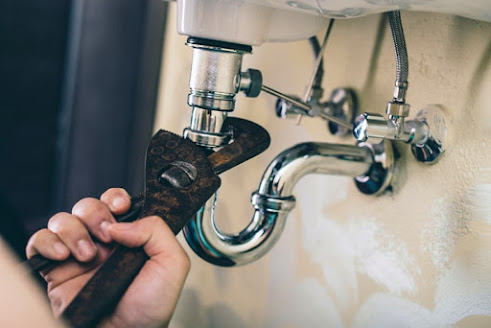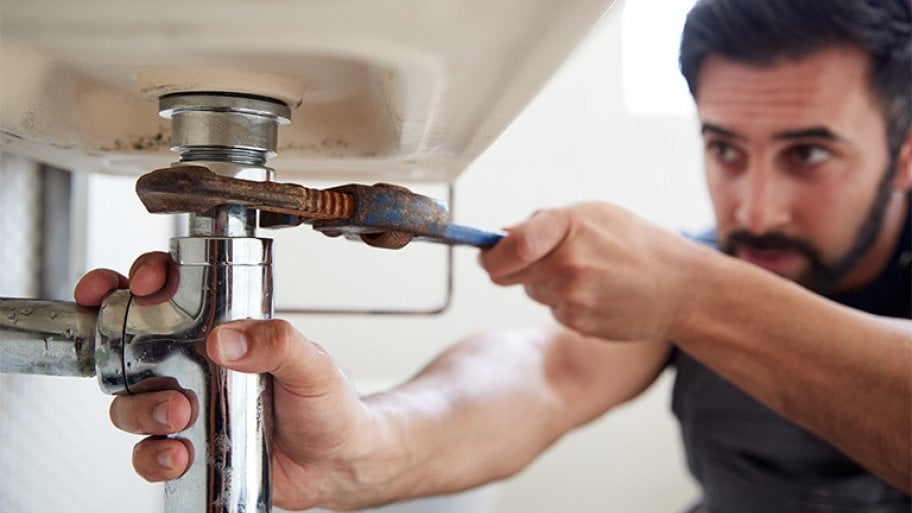Eliminate Annoying Plumbing Sounds in Your House
Eliminate Annoying Plumbing Sounds in Your House
Blog Article
Were you trying to find advise around Why Do My Pipes Make Noises?

To diagnose loud plumbing, it is important to identify initial whether the undesirable sounds happen on the system's inlet side-in other words, when water is turned on-or on the drainpipe side. Sounds on the inlet side have differed reasons: excessive water pressure, used valve as well as tap parts, incorrectly attached pumps or other appliances, improperly put pipeline bolts, and plumbing runs including a lot of limited bends or various other constraints. Noises on the drain side normally come from bad area or, similar to some inlet side sound, a design including tight bends.
Hissing
Hissing noise that happens when a tap is opened somewhat usually signals too much water pressure. Consult your local water company if you think this issue; it will certainly have the ability to inform you the water stress in your location and can install a pressurereducing valve on the incoming supply of water pipe if needed.
Various Other Inlet Side Noises
Squeaking, squealing, damaging, breaking, and also touching generally are brought on by the development or tightening of pipelines, usually copper ones providing warm water. The audios take place as the pipelines slide versus loosened bolts or strike neighboring residence framework. You can often determine the area of the issue if the pipelines are subjected; just follow the sound when the pipes are making sounds. More than likely you will certainly find a loose pipe wall mount or a location where pipelines lie so close to floor joists or various other mounting items that they clatter against them. Attaching foam pipeline insulation around the pipelines at the point of call must fix the problem. Make certain bands as well as hangers are secure and also supply appropriate support. Where feasible, pipe bolts need to be connected to enormous structural components such as structure walls instead of to mounting; doing so reduces the transmission of vibrations from plumbing to surface areas that can magnify and move them. If connecting fasteners to framework is inevitable, cover pipes with insulation or various other durable material where they speak to fasteners, and also sandwich the ends of new bolts between rubber washing machines when installing them.
Dealing with plumbing runs that suffer from flow-restricting limited or numerous bends is a last resort that ought to be embarked on only after getting in touch with a knowledgeable plumbing professional. Regrettably, this situation is rather common in older homes that may not have been developed with interior plumbing or that have seen numerous remodels, especially by novices.
Chattering or Shrieking
Extreme chattering or shrieking that occurs when a shutoff or tap is turned on, which usually vanishes when the fitting is opened totally, signals loose or faulty inner parts. The service is to change the valve or tap with a brand-new one.
Pumps and home appliances such as cleaning machines as well as dishwashers can transfer electric motor sound to pipes if they are improperly linked. Connect such items to plumbing with plastic or rubber hoses-never stiff pipe-to isolate them.
Drain Sound
On the drainpipe side of plumbing, the chief objectives are to remove surfaces that can be struck by dropping or hurrying water and to insulate pipelines to include inescapable audios.
In brand-new building, bathtubs, shower stalls, toilets, and also wallmounted sinks and also containers should be set on or against resilient underlayments to minimize the transmission of noise via them. Water-saving commodes and faucets are less noisy than standard models; install them rather than older kinds even if codes in your location still allow making use of older components.
Drains that do not run up and down to the cellar or that branch right into straight pipeline runs sustained at flooring joists or various other framing present specifically problematic noise issues. Such pipes are large sufficient to radiate substantial vibration; they likewise bring considerable quantities of water, that makes the scenario even worse. In brand-new building, define cast-iron dirt pipelines (the big pipes that drain toilets) if you can manage them. Their enormity consists of a lot of the noise made by water passing through them. Additionally, prevent routing drainpipes in wall surfaces shown to rooms as well as spaces where people collect. Walls consisting of drains ought to be soundproofed as was described earlier, making use of dual panels of sound-insulating fiberboard and wallboard. Pipelines themselves can be covered with unique fiberglass insulation made for the purpose; such pipelines have an invulnerable vinyl skin (in some cases having lead). Outcomes are not always satisfying.
Thudding
Thudding noise, usually accompanied by trembling pipes, when a tap or home appliance valve is turned off is a problem called water hammer. The sound as well as resonance are triggered by the reverberating wave of stress in the water, which unexpectedly has no place to go. Occasionally opening up a valve that releases water swiftly into an area of piping including a restriction, joint, or tee fitting can generate the exact same condition.
Water hammer can normally be cured by mounting fittings called air chambers or shock absorbers in the plumbing to which the trouble valves or faucets are connected. These gadgets allow the shock wave produced by the halted circulation of water to dissipate in the air they have, which (unlike water) is compressible.
Older plumbing systems may have brief vertical areas of capped pipeline behind walls on tap runs for the exact same objective; these can ultimately loaded with water, decreasing or damaging their effectiveness. The cure is to drain pipes the water supply totally by shutting off the main water system valve as well as opening up all taps. Then open up the major supply valve as well as shut the faucets one by one, beginning with the tap nearest the valve as well as finishing with the one farthest away.
WHY IS MY PLUMBING MAKING SO MUCH NOISE?
This noise indeed sounds like someone is banging a hammer against your pipes! It happens when a faucet is opened, allowed to run for a bit, then quickly shut — causing the rushing water to slam against the shut-off valve.
To remedy this, you’ll need to check and refill your air chamber. Air chambers are filled with — you guessed it — air and help absorb the shock of moving water (that comes to a sudden stop). Over time, these chambers can fill with water, making them less effective.
You’ll want to turn off your home’s water supply, then open ALL faucets (from the bathroom sink to outdoor hose bib) to drain your pipes. Then, turn the water back on and hopefully the noise stops! If you’re still hearing the sound, give us a call to examine further.
Whistles
Whistling sounds can be frustrating, as sometimes the source isn’t easily identified. However, if you can pinpoint which faucet or valve that may be the cause, you’ll likely encounter a worn gasket or washer — an easy fix if you replace the worn parts!Whistling sounds from elsewhere can mean a number of things — from high water pressure to mineral deposits. Your best plan of attack here is to give our plumbing experts a call. We’ll be able to determine where the noise is coming from and what the cause may be, then recommend an effective fix!
Cracks or Ticks
Cracking or ticking typically comes from hot water going through cold, copper pipes. This causes the copper to expand resulting in a cracking or ticking sound. Once the pipes stop expanding, the noise should stop as well.
Pro tip: you may want to lower the temperature of your water heater to see if that helps lessen the sound, or wrapping the pipe in insulation can also help muffle the noise.
Bangs
Bangs typically come from water pressure that’s too high. To test for high water pressure, get a pressure gauge and attach it to your faucet. Water pressure should be no higher than 80 psi (pounds per square inch) and also no lower than 40 psi. If you find a number greater than 80 psi, then you’ve found your problem!
Next step is to give us a call in order to install a pressure regulator. Trust us, you don’t want to wait to resolve this issue. Not only is the sound annoying, but high water pressure can be destructive to your home — including damaging certain appliances, like your washer and dishwasher.
Dripping
You might be accustom to the slow quiet drip your kitchen faucet makes. You might have even tuned out your bathroom sink dripping and drabbing all day long — but it’s time to find its cause.
A slow drip could signify a variety of easy to fix issues, such as a worn out O ring, or loose part. And by ignoring the drip, you could be wasting up to 2,000 gallons of water a year! So start conserving water — get it looked at ASAP.
https://www.pwessig.com/blog/2018/december/why-is-my-plumbing-making-so-much-noise-/

We are very taken with Why Do My Pipes Make Noises and I'm hoping you enjoyed reading the piece. Those who enjoyed reading our blog posting kindly be sure to share it. Many thanks for taking the time to read it.
Service excellence here. Report this page